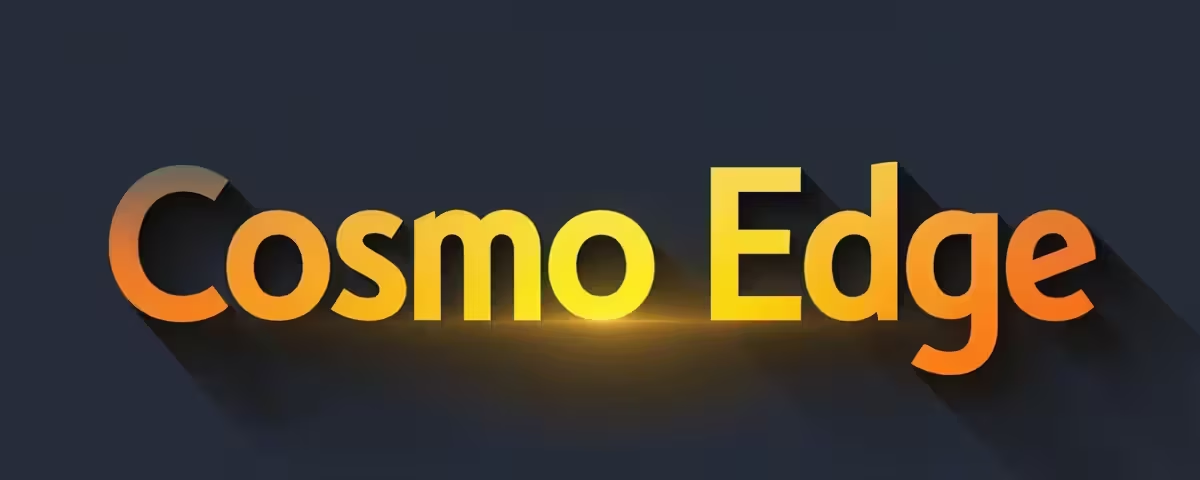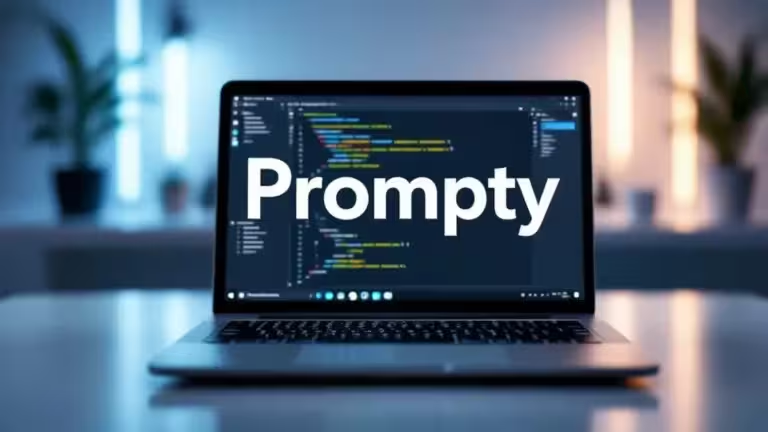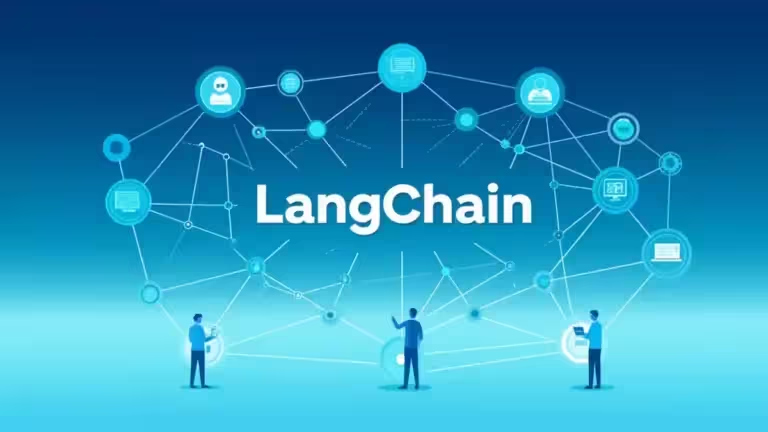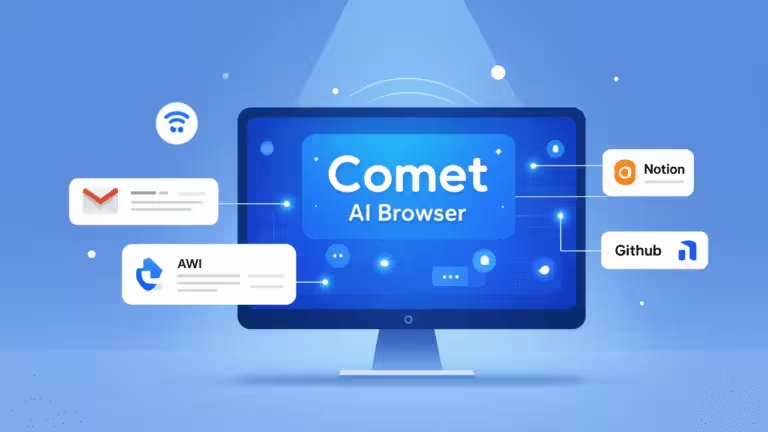Web Search API Comparison 2025: Performance, Pricing and Features
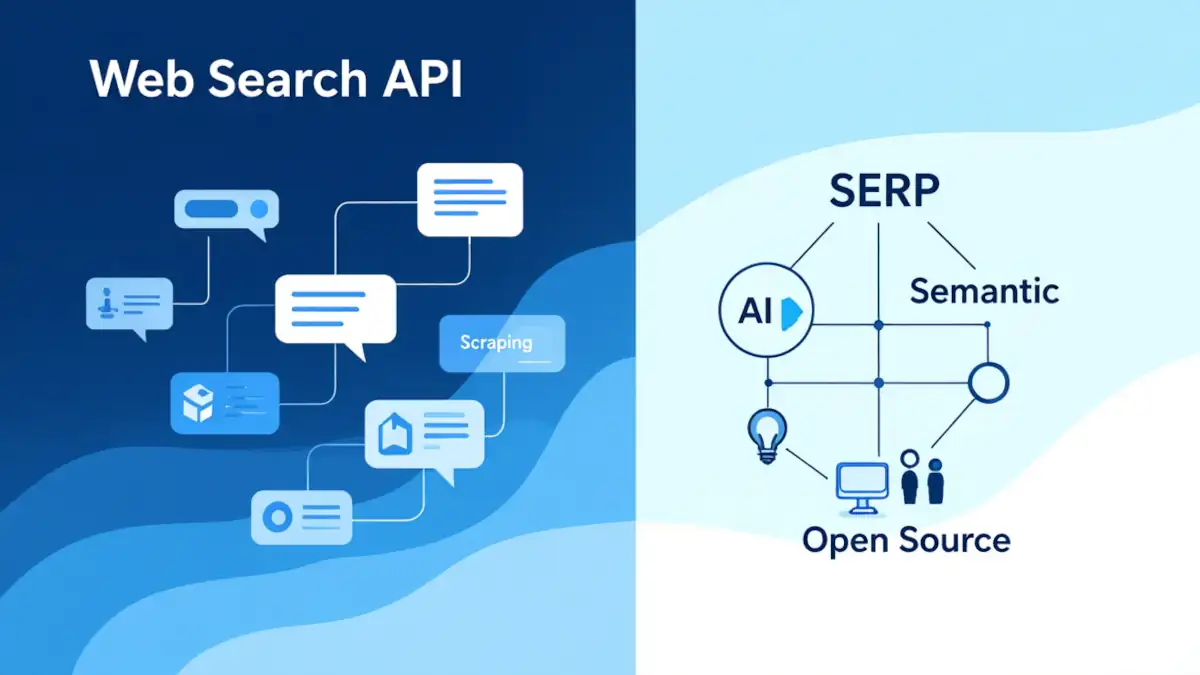
Since the discontinuation of Bing Search API in August 2025, the Web Search API market has changed dramatically. Developers, researchers, and companies that relied on this service had to migrate to other solutions. This shift reshaped the ecosystem, giving rise to new providers and more specialized technologies.
Comparing Web Search APIs has become essential to evaluate their performance, cost, and regulatory compliance. Current solutions differ by use case: result extraction, AI integration, automated scraping, or open-source deployment.
The end of Bing API: a turning point for developers
Until its retirement, Bing Search API was a reliable alternative to Google Custom Search. Its sudden shutdown, announced with only three months’ notice, disrupted many monitoring and analysis tools. The event revealed how dependent digital projects had become on proprietary services and opened the door for more open and specialized offers.
Post-Bing market boom: new players and segmentation
The gap left by Bing boosted four main categories of Web Search APIs:
- SERP APIs – direct extraction of search-engine results.
- AI semantic APIs – contextual search adapted to large language models.
- Proxy scraping APIs – flexible collection and bypassing of blocks.
- Open-source solutions – privacy and data sovereignty.
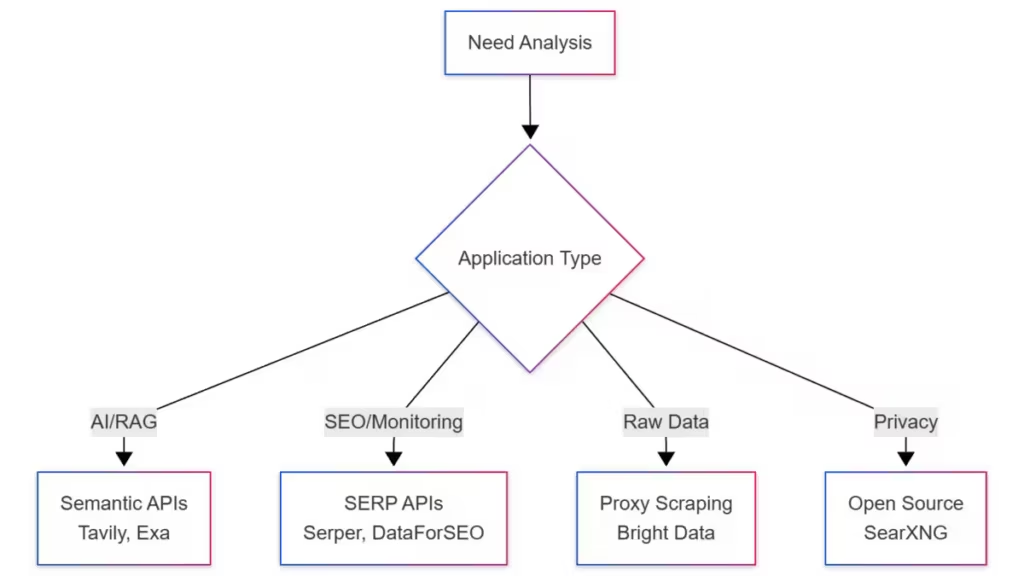
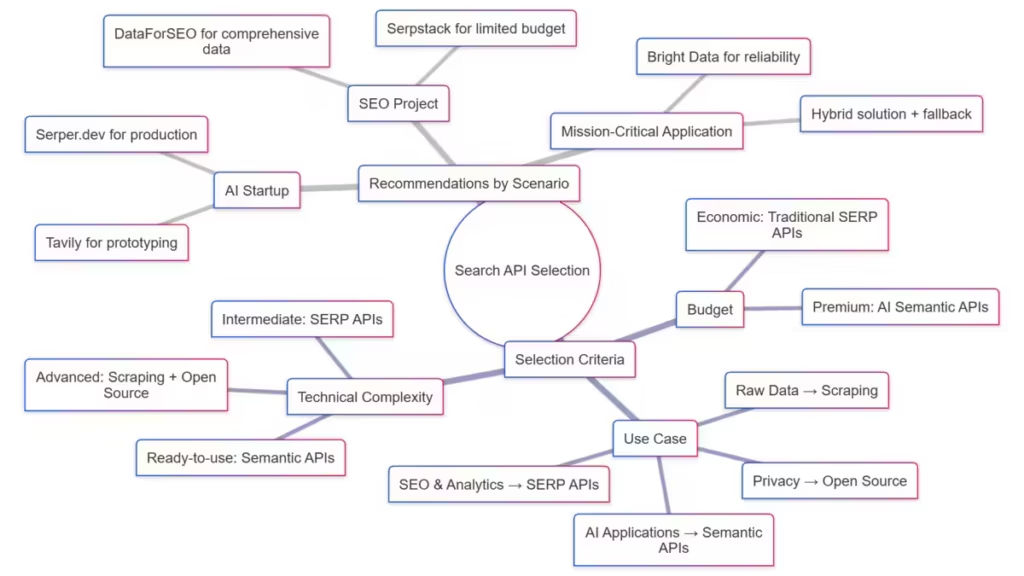
(Click to enlarge)
The main families of Web Search APIs
SERP APIs: raw data and SEO tracking
SERP APIs such as SerpAPI, Serper.dev, or Zenserp extract search-engine result data from Google or Bing including titles, links, snippets, and positions. They are widely used for SEO tracking, competitive analysis, and academic research.
Serper.dev stands out for its transparent pricing and easy integration. SerpAPI, more comprehensive, offers detailed documentation and proven reliability. Zenserp targets demanding users with greater precision on ads and local results in exchange for a higher price.
Semantic APIs for AI and intelligent agents
Semantic APIs like Tavily, Exa, or Perplexity Search go beyond traditional search. They interpret the intent behind the query to provide contextualized results, summaries, and citations directly consumable by AI models.
These APIs integrate with RAG pipelines (Retrieval-Augmented Generation), where retrieved data feeds large language models. They are becoming a core component of modern AI workflows, reducing the need for manual extraction and improving the relevance of results.
Also read : What is a Vector Database? Understanding Its Role in AI and RAG Models
Proxy scraping APIs
Companies like Bright Data, Oxylabs, or ScraperAPI emphasize flexibility and global coverage. These APIs handle blocking, JavaScript rendering, or CAPTCHAs through distributed proxy networks.
Their pay-per-success model charges only successful requests, offering predictable cost control. They mainly serve businesses performing large-scale scraping or international monitoring but require strong technical expertise.
Open-source solutions
Open-source projects like SearXNG, Whoogle, or Openperplex promote a more sovereign and privacy-respecting approach. These metasearch engines aggregate multiple sources (Google, DuckDuckGo, Wikipedia) and can be self-hosted.
Their key advantage is total data confidentiality, since no information leaves the user’s infrastructure. The drawback is maintenance and technical management, which demand some expertise.
| Category | Main Providers | Typical Use Cases | Advantages | Limitations | Estimated Cost (100k queries) |
|---|---|---|---|---|---|
| SERP APIs | Serper.dev, SerpAPI, Zenserp, Serpstack, DataForSEO, SearchAPI | SEO tracking, position monitoring, competitive analysis | Accurate data, comprehensive docs, multi-engine support | No content extraction, SERP dependence | €27–150 |
| AI semantic APIs | Tavily, Exa, Perplexity Search | RAG, AI agents, contextual retrieval | Enriched results, JSON output ready for LLMs | High cost, not ideal for raw SEO | €30–500 |
| Proxy scraping APIs | Bright Data, Oxylabs, ScraperAPI, Firecrawl | Dynamic scraping, geolocation, JS rendering | Flexibility, CAPTCHA bypass, multi-region support | Technical complexity, legal risks | €50–160 |
| Open-source solutions | SearXNG, Whoogle, Openperplex | Metasearch, self-hosting, privacy | Free, GDPR compliance, independence | Maintenance, variable durability | ~€14 / month (hosting) |
Pricing comparison and billing models
The pricing of Web Search APIs varies widely depending on performance and query volume. Prices can range from €25 to more than €500 per 100,000 requests.
Budget-friendly options: Serper.dev, Serpstack, Bright Data
Serper.dev offers competitive rates between €30 and €100 per 100,000 queries with a progressive pricing model. Serpstack provides a free plan (100 queries per month) and paid tiers starting at €27, ideal for small projects or startups. Bright Data charges between €50 and €75 depending on volume, using a pay-per-success model that ensures both efficiency and transparency.
Premium and AI-ready solutions
Zenserp, Tavily, Exa, and Perplexity Search dominate the high-end segment.
- Zenserp – €160 to €420 per 100,000 queries, with an average latency of 1.2 to 1.8 seconds.
- Tavily / Exa – credit-based model (€0.005–€0.008 per query), including extraction and JSON formatting.
- Perplexity Search – ultra-fast (<500 ms) but expensive (≈€500 per 100,000 requests).
These APIs justify their higher prices with superior performance and AI-oriented features.
Total cost of ownership and billing models
Three main pricing models dominate:
- Monthly subscription – simple but less flexible.
- Pay-per-success – charges only successful calls (Bright Data).
- Credit or hybrid system – flexible but harder to forecast.
Open-source options like SearXNG remain the cheapest (≈€14/month for VPS hosting or free on local machines) but require technical setup and tuning to achieve reliable results without depending on paid APIs.
| Provider | Category | Billing Model | Estimated Cost (100k queries) | Key Strengths |
|---|---|---|---|---|
| Serpstack | SERP API | Monthly subscription | €27–60 | Very affordable, strong value for money |
| Serper.dev | SERP API | Pay-as-you-go | €30–100 | Transparent pricing, stable support |
| DataForSEO | SERP API | Per-page / async | ~€60 | Flexible model, up to 80% cost reduction |
| Bright Data | Scraping proxy | Pay-per-success | €50–75 | GDPR compliance, high reliability |
| SerpAPI | SERP API | Monthly subscription | €75–150 | Comprehensive docs, multi-engine support |
| Zenserp | SERP API (premium) | Subscription | €160–420 | High speed, accurate ad tracking |
| Oxylabs | Scraping proxy | Custom quote | €160+ | Global coverage, stability |
| ScraperAPI | Scraping proxy | Variable credits | €49–300 | Adaptive pricing, decent throughput |
| Tavily | AI semantic | Credit per query | €30–300 | Extraction included, JSON optimized for LLMs |
| Perplexity Search | AI semantic (premium) | Per query (Pro) | €500+ | Ultra-fast, latency <500 ms |
| SearXNG | Open source | VPS hosting | Free local or ~€14.25 VPS | Fully self-hosted, 100% GDPR compliant |
Performance and technical reliability
Average latency and benchmarks
According to Capturekit.dev and LOBSTR, latency differences between APIs are significant:
- Perplexity Search – ~0.5 s
- Zenserp – 1.2 to 1.8 s
- Serpstack – 2 to 2.5 s
- SerpAPI – 2.5 to 3 s
AI-oriented APIs prioritize speed, while SERP APIs focus on stability and data richness.
Data extraction quality and functional coverage
SERP APIs deliver key elements such as titles, links, snippets, ads, and local results. Advanced versions also include “People Also Ask” sections and Knowledge Graph blocks. Semantic APIs like Tavily and Exa enhance the output with summaries and citations, structured for AI models and RAG workflows.
Load testing recommendations
Before large-scale deployment, it is advisable to run tests on a representative sample. Performance often depends on query type and geolocation. Pre-validation helps measure real-world latency and optimize API quotas.
Average latency (seconds) by query volume
| Provider | 10k queries | 25k queries | 50k queries | 75k queries | 100k queries | Observations |
|---|---|---|---|---|---|---|
| Perplexity Search | 0.45 s | 0.48 s | 0.50 s | 0.55 s | 0.60 s | Very stable, latency <1s even under heavy load |
| Tavily (AI) | 0.60 s | 0.70 s | 0.80 s | 0.90 s | 1.00 s | Consistent performance, ideal for RAG and AI agents |
| Bright Data | 1.20 s | 1.30 s | 1.40 s | 1.60 s | 1.80 s | Good resilience, slight increase at high load |
| Zenserp | 1.30 s | 1.40 s | 1.60 s | 1.80 s | 2.10 s | Controlled latency up to 75k, drops afterward |
| Serper.dev | 1.10 s | 1.20 s | 1.30 s | 1.50 s | 1.60 s | Balanced speed-to-cost ratio |
| SerpAPI | 2.30 s | 2.50 s | 2.80 s | 3.00 s | 3.20 s | Latency grows with traffic but remains stable for small-scale use |
Analysis
- Semantic APIs (Perplexity, Tavily) lead in speed thanks to optimized AI infrastructure.
- General-purpose providers like Bright Data and Serper.dev offer a good trade-off between speed and reliability.
- Established APIs (SerpAPI, Zenserp) remain dependable but show latency growth beyond 50k queries.
Legal framework and GDPR compliance
Scraping and GDPR: what the law says
Under the GDPR (Article 6), any collection of personal data via scraping or APIs requires a valid legal basis. In France, the CNIL can impose penalties of up to €20 million or 4 % of global annual turnover. The European Database Directive also prohibits systematic extraction of protected content, even when it is publicly accessible.
Bright Data and its European representative EDPO
Bright Data stands out as the only provider with an official representative in Europe (EDPO), based in Brussels. This strengthens its legal compliance for European clients. Other vendors rely mainly on Data Processing Agreements (DPA) to meet GDPR requirements.
Risks related to terms of service
In the United States, the X Corp vs Bright Data (2023) ruling confirmed the legality of scraping publicly available data. In Europe, regulation remains stricter: the CNIL can prohibit use if the data processing lacks legitimate purpose. Organizations must therefore document how they process data and avoid extracting content from platforms protected by database rights.
Which API should you choose?
For SEO and ranking monitoring
Serper.dev and Serpstack offer an excellent balance between cost and reliability. They are suitable for SEO monitoring, market analysis, and competitor audits.
For AI and RAG projects
Teams working with AI applications should prioritize Tavily, Exa, or Perplexity Search, all optimized for semantic retrieval and contextual understanding of results.
For GDPR-compliant organizations
European companies will prefer Bright Data for its legal framework or SearXNG for a fully self-hosted, privacy-focused setup that keeps all data under local control.

Market trends and perspectives
Convergence between web search and generative AI
Web Search APIs are evolving toward hybrid systems that combine traditional indexing with semantic understanding. These AI-powered search solutions now integrate directly into intelligent agents and retrieval pipelines, transforming search into a contextual answer service rather than a list of links.
The rise of open-source and local solutions
The growth of projects such as SearXNG reflects increasing demand for digital sovereignty. Enterprises and public institutions are turning to self-hosted search engines that ensure security, privacy, and independence from commercial vendors.
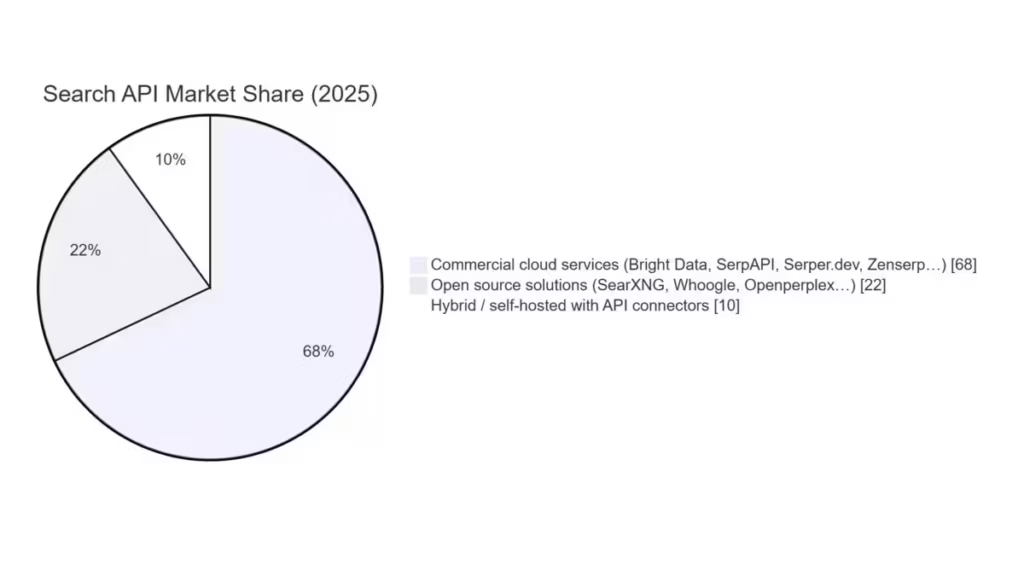
Conclusion
The Web Search API landscape is changing rapidly. Each category serves a specific need:
- Serper.dev and Serpstack for SEO and everyday automation.
- Tavily, Exa, and Perplexity Search for AI workflows and RAG systems.
- Bright Data and SearXNG for data privacy and compliance.
The future lies at the crossroads of web search and artificial intelligence, with APIs capable of understanding user intent and ensuring transparent, traceable data collection.
Sources and references
Tech media
- 2025-09, as reported by Alphacorp.ai, compares the performance of Perplexity Search and Tavily.
- 2025-09, according to Apify, details coverage differences between SerpAPI and Serper.dev.
Companies
- 2025-11, as stated by Serper.dev, publishes its pricing plans and documentation.
- 2025-11, according to Tavily, explains its credit system and integrated extraction.
- 2025-11, based on Exa, highlights its semantic search approach and JSON format for LLMs.
- 2025-10, as indicated by Bright Data, promotes its pay-per-success model and GDPR compliance.
- 2025-09, according to Zenserp, publishes pricing and performance benchmarks.
- 2025-09, as reported by SerpAPI, outlines multi-engine coverage and transparent costs.
Institutions
- 2025-01, as noted by CNIL, emphasizes the need for a lawful basis for all data collection.
- 2025-01, according to the EDPB, details the role of EDPO as EU representative for non-EU companies.
Official sources
- 2025-08, as stated by Microsoft Azure, confirms the end of Bing Search API.
- 2025-08, according to Bright Data, provides ethical data-collection guidelines.
- 2025-09, as reported by Serpstack, details its free and paid plans.
- 2025-09, according to SearchAPI.io, updates its documentation and terms of use.
Your comments enrich our articles, so don’t hesitate to share your thoughts! Sharing on social media helps us a lot. Thank you for your support!
